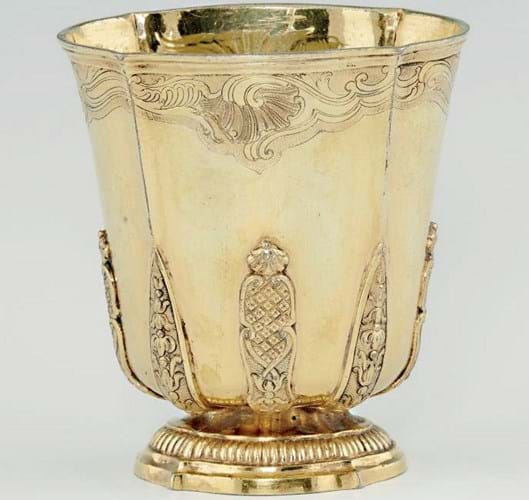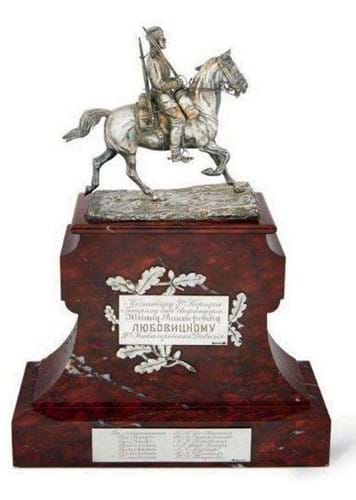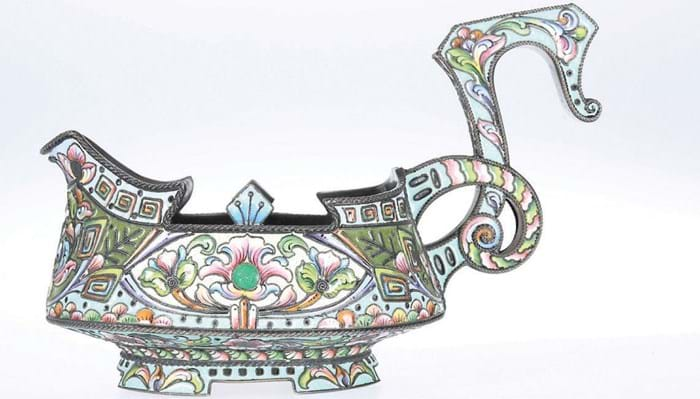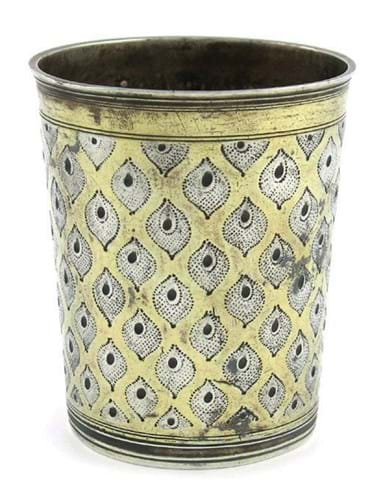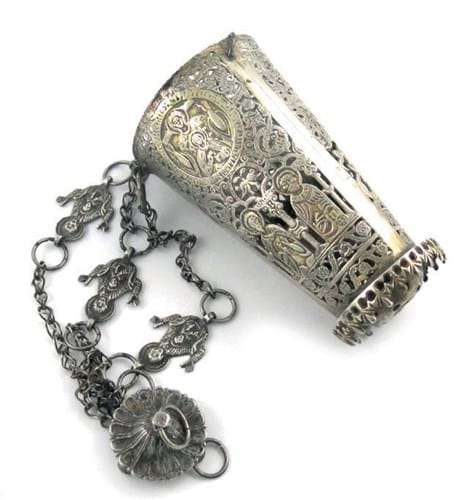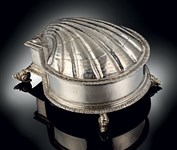Topping the silver at Mellors & Kirk in Nottingham on March 21 was a c.1730 silver-gilt beaker by Johann Ludwig II Imlin, of Strasbourg. An almost identical beaker with engraved rocaille decoration failed against a £5000-6000 estimate at Sotheby’s in Paris last April.
However, the 3½in (9cm) Nottingham piece, offered with a here-to-sell £250-400 guide, sold at £5500.
Spanish inkstand
Four pieces of Continental silver caught the eye at Bellmans’ (22% buyer’s premium) April 2-5 sale at Billingshurst in West Sussex including, rather unusually, a provincial Spanish work.
The 12¾in (32.5cm) long inkstand dating from the second half of the 18th century bore the mark for Damien de Castro, Cordoba. Estimated at £1000-1500, it sold to a Spanish collector at £3100.
Going further above estimate was a Genoa 1770 pear-shaped coffee pot. With an animal-head terminal to the spout and a wooden handle, the 10½in (27cm) tall pot, estimated at £700-1000, sold to the London trade at £3000.
Also made in 18th century Genoa and selling to a London dealer was a c.1740 baluster-form ewer.
With a scrolling handle, cast cartouche to the lip, engraved borders and a shaped circular foot, the 12½in (32cm) tall ewer took the top price of the foreign foursome, selling a little above estimate at £3200.
German silver was represented by a rococo parcel-gilt, twin-handled ecuelle, cover and stand. Probably made in early 18th century Augsburg, the 9¼in (23cm) diameter two-handled soup bowl, decorated with portraits of ladies and putto, doubled the top estimate in selling to a German buyer at £3000.
Russian cavalryman
At Roseberys London (25% buyer’s premium) on March 25, a 15in (42cm) high Russian silver presentation equestrian figure sold to an online bidder at £10,500 (estimate £2000-3000).
With St Petersburg marks for 1899-1908, the figure of a cavalry soldier with drawn sabre on a stepped red-marble plinth was applied with two plaques engraved in Cyrillic with the name of Julius Lyubovistky, general of the infantry, and a list of senior officers.
As Lyubovitsky retired from the army in 1905 to become a member of the State Council of Imperial Russia, it is likely this piece was given to him in that year to mark the end of an immensely successful military career.
He was responsible for much of the peacetime training of the imperial army and likely played a prominent role in the selection of the Mosin-Nagant, featured prominently in this figure, as the standard Russian service rifle.
Raising international interest at the inaugural Elstob & Elstob (20% buyer’s premium) auction at Bedale on March 24 was an early 20th century silver and enamel kovsh.
Bearing the second (1908-26) Kokoshnik mark and the Moscow maker’s mark TC, the 5½in (14cm) long, 5oz traditional drinking vessel was pitched at £300-500.
It brought strong Russian bidding but sold to an online US buyer at £5000.
Thirty-three lots of Russian silver were on offer at Woolley & Wallis’ Salisbury sale, comprised of mainly card and cigarette cases.
Best-seller was a silver-gilt and enamel tea glass holder, by the 6th Artel, c.1915, bearing Moscow marks for 1908-26. It was estimated at £300-400 but sold to an overseas buyer at £3400.
Eager beaker bidder
From Denmark was an early 19th century parcel-gilt silver beaker, possibly by Johan Lercke of Copenhagen. Of tapering circular form with a leaf-shaped pattern decoration, the 3½in (9cm) tall beaker also demolished expectations to sell overseas at £3200 against a £300-400 estimate.
Made by an unidentified Oporto smith in the 1860s, a wine taster – a shallow 4½in (11.5cm) diameter tapering bowl in its fitted case – took £1300 from a private collector against hopes of £300-400.
Among the Ottoman silver was a rare liturgical hanging lamp from 17th century Christian Serbia.
The 5in (13cm) tapering cylindrical lamp – a type that occasionally appears in specialist sales – featured pierced and engraved biblical decoration with three supporting chains each with a pendant of a saint. It quadrupled the lower estimate at £2000.

